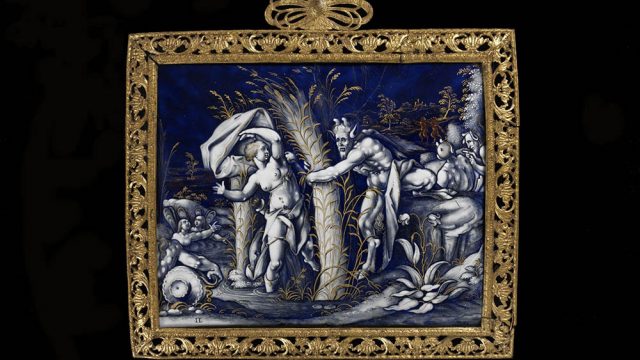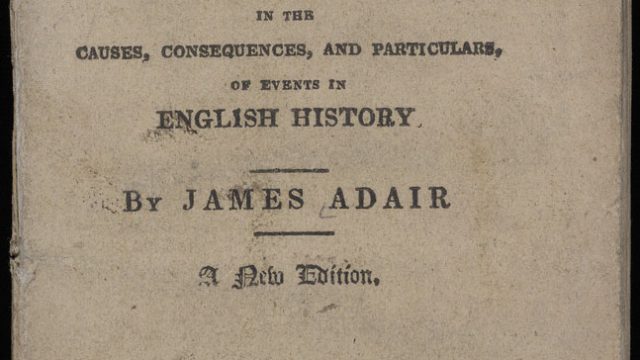This post was written by second-year student, Katie Vann, one of the V&A/RCA History of Design MA students participating in the ‘Thinking and Experiencing Techne’ seminar/lab.
Before trying our hands at sixteenth-century varnish recipes, the class took up an initial experiment: following food recipes that were all over a hundred years old. With authentic re-creation as our aim, we undertook to make a ‘Quiddany of Quince’ from a 1675 recipe found in The Accomplisht Lady’s Delight in Preserving, Physick, Beautifying and Cookery, a 1720 caraway seed cake recipe, and ‘Pippins Preserved at Cristmas’, from Catherine Cotton’s Recipe Book (1690-1700).
Although we aimed for authenticity, following the recipes closely presented various challenges. It became apparent to everyone that the early-modern recipes had some gaps in their instructions – at least as far as the twenty-first-century reader was concerned. They assumed readers had implicit knowledge of the processes and technologies used to create the dishes. Rather than using time, for instance, the recipes relied on the senses to judge cooking processes, using colour, smell and taste. The ‘Quiddany of Quince’ recipe is one example of this. It instructs the reader: ‘so let it boyl till it come to be of a deep co’our’. Consequently we were forced to use our senses to judge when we thought the recipes smelled, looked or tasted like the descriptions.
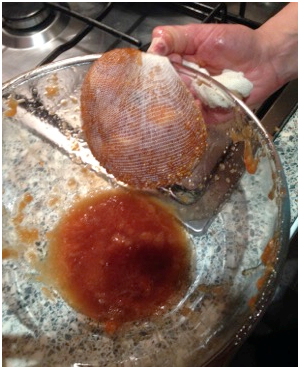
Of all of the recipes, we found that the caraway seed cake tasted the strangest. It was overwhelmingly aromatic, and eating it recalled the sensation of inhaling an essential oil.
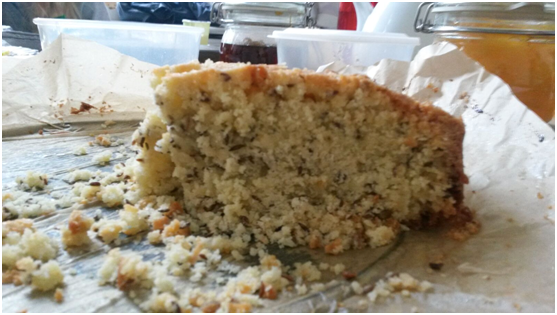
The ‘Pippins Preserved at Cristmas’ recipe yielded three honey-like apple preserves, which were mind-blowingly sweet. As the image below shows, our experiment with this recipe generated three very varied results. This is because we used three different kinds of apples, which ‘behaved’ in completely different ways (a result that indicates some of the challenges involved in identifying and sourcing ‘authentic’ materials). Sampling them gave us a sense of what sixteenth-century palates may have tasted, but we were offered little clue as to what this preserve was intended to be served with in the past.
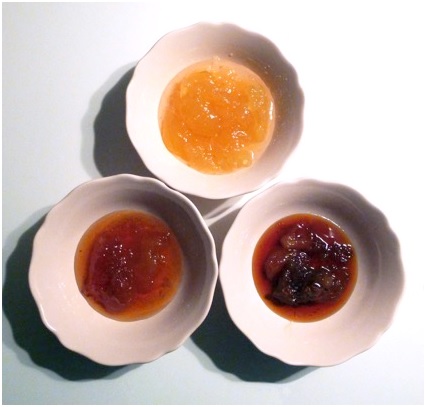
As design historians, we are used to gaining knowledge through reading historical sources and texts. This process, however, prompted us to rethink how we acquire knowledge beyond books, manuscripts or other textual sources. It made us aware of different historical palates, technologies for cooking, and how knowledge about specific cooking processes develops in tacit ways, beyond texts.
Click here for the previous blog from the ‘Techne’ seminar/lab series.
To see what else V&A/RCA History of Design students have been up to, read our other blog posts, check our pages on the RCA website and take a look at Un-Making Things, a student-run online platform for all things design history and material culture.
The V&A/RCA History of Design MA is having an Open Day on 25 November 2016. Anyone wishing to attend must register in advance, for security reasons at both institutions. For further details and to book a place please email hod@rca.ac.uk
